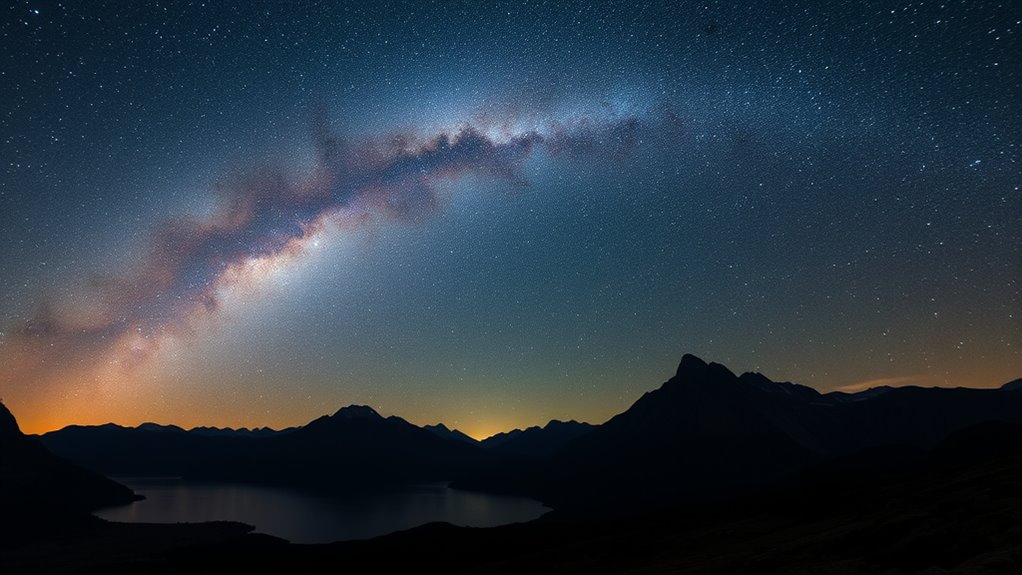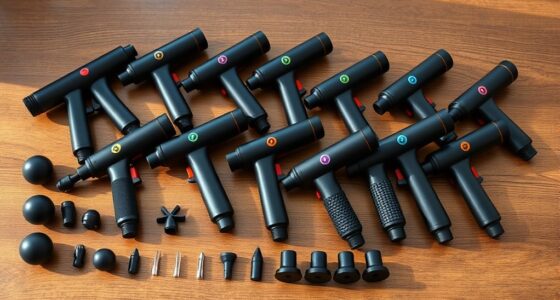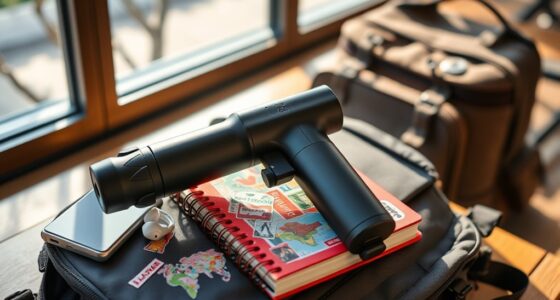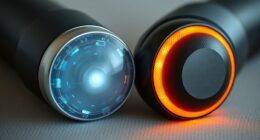If you’re looking to capture the Milky Way like a pro in 2025, I recommend considering a mix of ultra-wide and fast lenses. The AstrHori 6mm F2.8 fisheye offers immersive 220° views, perfect for stunning, spherical shots, while the Sony E 16mm F2.8 is compact and brilliant for wide shots. For high-quality, low-light shots, the VILTROX 75mm f/1.2 provides excellent brightness and detail. Keep reading to discover more about these top picks and how to choose the best for you.
Key Takeaways
- Opt for lenses with ultra-wide fields of view (14mm–24mm) to capture expansive night sky scenes and reduce stitching.
- Prioritize fast apertures (f/1.2–f/2.8) for better low-light performance and shorter exposure times.
- Choose lightweight, portable lenses under 1 pound for easier outdoor shooting and travel convenience.
- Ensure compatibility with your camera mount and prefer manual focus for precise control in low-light conditions.
- Select high-quality optical designs with high-refractive index elements to minimize aberrations and maximize image clarity.
AstrHori 6mm F2.8 Circular Fisheye Lens for Nikon Z Mount
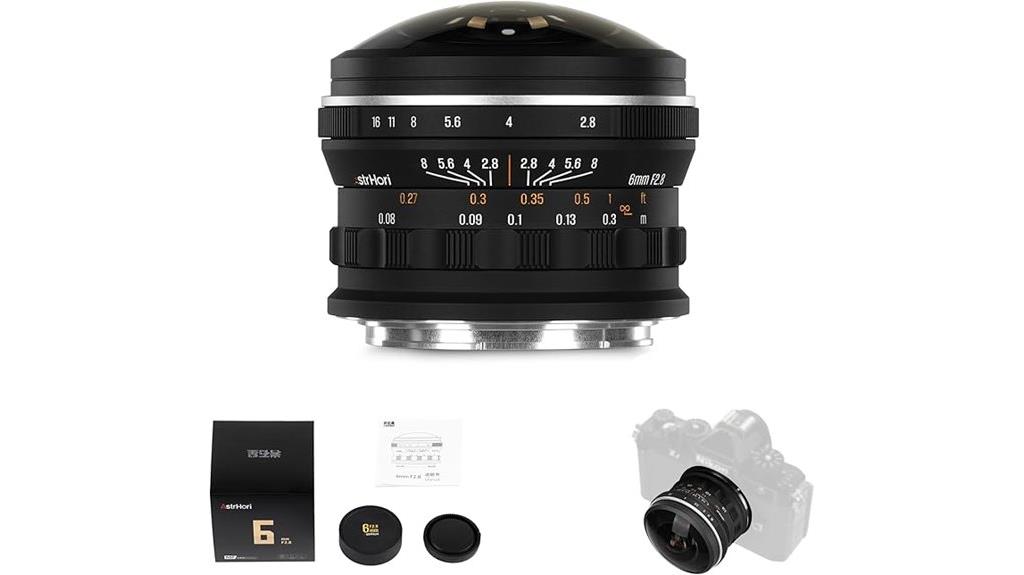
If you’re serious about capturing the Milky Way and expansive night skies, the AstrHori 6mm F2.8 Circular Fisheye Lens for Nikon Z Mount is an excellent choice. It offers a stunning 220° ultra-wide field of view, creating immersive, spherical images with bold edge distortion perfect for astrophotography. The bright F2.8 aperture enhances low-light performance, making night sky shots clearer and more detailed. Its compact, all-metal design ensures durability and portability for outdoor adventures. Designed for Nikon Z full-frame mirrorless cameras, it provides precise manual focus control. Whether for celestial scenes, creative landscapes, or VR content, this lens delivers striking, artistic visuals for your projects.
Best For: astrophotographers, landscape and cityscape enthusiasts, and creative content creators seeking a unique spherical fisheye perspective for night sky, VR, and artistic projects.
Pros:
- Ultra-wide 220° field of view delivers immersive, full-frame spherical images with dramatic edge distortion.
- Bright F2.8 aperture enhances low-light performance, ideal for night sky and astrophotography.
- Compact all-metal body ensures durability and portability for outdoor and travel use.
Cons:
- Manual focus design requires user to set focus precisely, which may be challenging for some users.
- Compatibility limited to Nikon Z mount full-frame mirrorless cameras; not suitable for other camera systems.
- Large fisheye distortion may not be suitable for traditional or straightforward photography styles.
VILTROX 75mm f/1.2 PRO E Lens for Sony APS-C Cameras
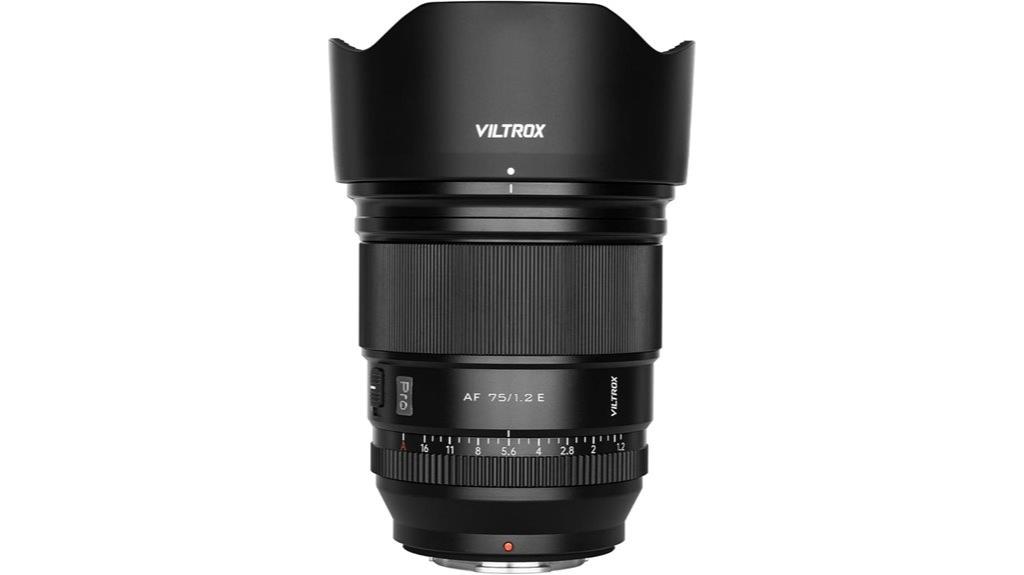
Looking for a lens that excels in low-light conditions and captures stunning Milky Way shots? The VILTROX 75mm f/1.2 PRO E is perfect for Sony APS-C cameras like the a7 series and ZV models. Its ultra-wide f/1.2 aperture lets in plenty of light, helping you shoot sharp, vibrant night sky images even at high ISO. With 16 lens elements including high-refractive ones, it ensures excellent resolution and detail. The fast STM autofocus and dual aperture modes offer flexibility for both photography and videography. Weighing just under 3 pounds, it’s a reliable, versatile choice for capturing the cosmos with clarity and precision.
Best For: photographers and videographers using Sony APS-C mirrorless cameras who need a high-quality lens for low-light, portrait, and astrophotography.
Pros:
- Exceptional f/1.2 aperture allows excellent low-light performance and beautiful background blur
- Fast and precise autofocus with STM motor, suitable for both stills and video
- High-resolution optical design with 16 elements in 11 groups ensures sharp, detailed images
Cons:
- Relatively heavy at 2.79 pounds, which may be less convenient for handheld shooting over long periods
- Higher price point compared to standard lenses, potentially limiting accessibility for casual users
- Designed specifically for APS-C cameras, so not compatible with full-frame Sony models
78 D Double Aspheric Lens
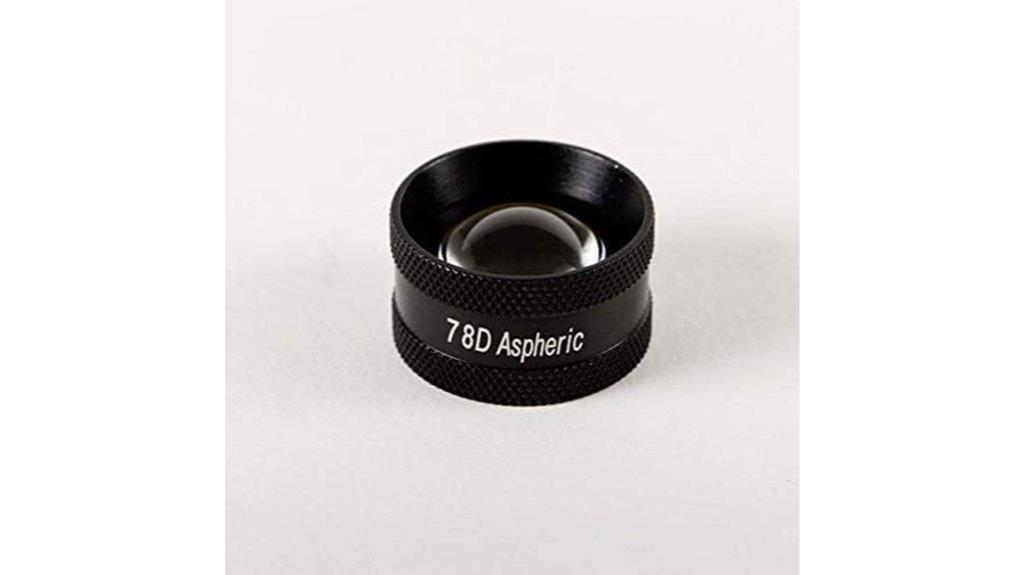
The 78 D Double Aspheric Lens stands out for its ideal balance of field of view and magnification, making it perfect for detailed slit lamp examinations. Its extended working distance from the cornea provides greater clinical flexibility, allowing for precise assessments without proximity discomfort. Manufactured by KASHSURG, this lightweight lens weighs just 5 ounces and fits comfortably in a compact package. Its continuous research may cause slight variations in specifications and color, but overall, it offers reliable performance. With a solid 4.4-star rating from users and a reputation as a best-seller, the 78 D Double Aspheric Lens is a versatile tool for eye care professionals.
Best For: eye care professionals seeking a reliable, high-magnification slit lamp lens with extended working distance for detailed examinations.
Pros:
- Offers an ideal balance of field of view and magnification for precise assessments.
- Extended working distance enhances clinical flexibility and patient comfort.
- Lightweight and compact design for ease of handling during examinations.
Cons:
- Slight variations in specifications and color due to ongoing research.
- Price details may require inquiry, potentially delaying immediate purchase.
- Availability and shipping costs may vary depending on vendor or location.
VILTROX 75mm f/1.2 XF PRO Lens for Fuji X-Mount Cameras
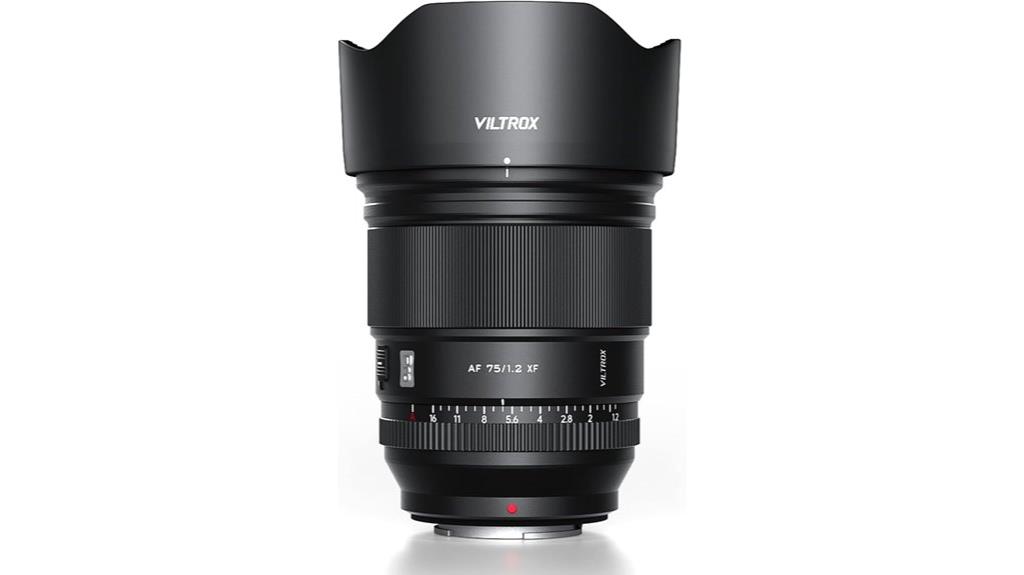
Photographers seeking exceptional low-light performance for Milky Way photography will appreciate the VILTROX 75mm f/1.2 XF PRO lens, which offers a bright f/1.2 aperture ideal for capturing the night sky. Designed for Fuji X-mount APS-C cameras, it features 16 lens elements in 11 groups, including high-refractive index elements for sharp, detailed images. Its fast, quiet autofocus with manual override, combined with electronic aperture control, makes it versatile for both stills and video. Compact and durable, this lens excels in low-light conditions, delivering stunning astrophotos with excellent resolution and minimal breathing effects—perfect for capturing the Milky Way’s beauty.
Best For: photographers and videographers seeking exceptional low-light and astrophotography capabilities with a Fuji X-mount APS-C camera.
Pros:
- Bright f/1.2 aperture ideal for low-light and night sky photography
- High-resolution images with 16 lens elements, including high-refractive index elements
- Quiet, fast autofocus with manual override and electronic aperture control
Cons:
- Relatively heavy at 2.82 pounds, which may affect portability
- Limited to Fuji X-mount APS-C cameras, reducing versatility across other systems
- Higher price point reflecting premium build and optical quality
Sony E 16mm F2.8 Wide-Angle Prime Lens
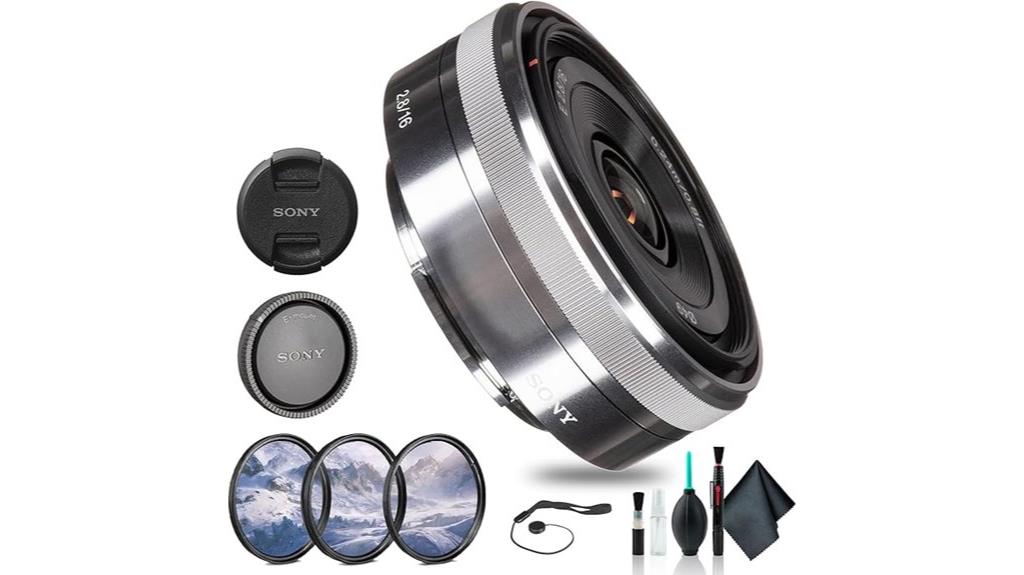
For anyone venturing into Milky Way photography with an APS-C E-mount camera, the Sony E 16mm F2.8 wide-angle prime lens stands out as an ideal choice. Its ultra-compact pancake design weighs just 67g and measures only 22.5mm, making it perfect for travel and quick setups. The bright F2.8 aperture guarantees good low-light performance, while the optical elements minimize distortion and aberrations for sharp, contrast-rich images. Compatibility with optional conversion lenses offers added perspective options without bulk. Its responsive autofocus and included accessories make it a versatile, portable lens suited for capturing stunning night sky scenes effortlessly.
Best For: photographers seeking a compact, versatile wide-angle lens for landscape, travel, and night sky photography with APS-C E-mount cameras.
Pros:
- Ultra-compact and lightweight design (67g, 22.5mm length) ideal for travel and everyday carry
- Bright F2.8 aperture provides good low-light performance and artistic background blur
- Optical elements minimize distortion and aberrations for sharp, contrast-rich images
Cons:
- Customer reviews are mixed, averaging 3.0 out of 5 stars, indicating varied user experiences
- Limited focal length (24mm equivalent) may not suit all wide-angle needs
- Compatibility with optional conversion lenses requires additional purchase for perspective versatility
Factors to Consider When Choosing Wide-Field Lenses for Milky Way Photography
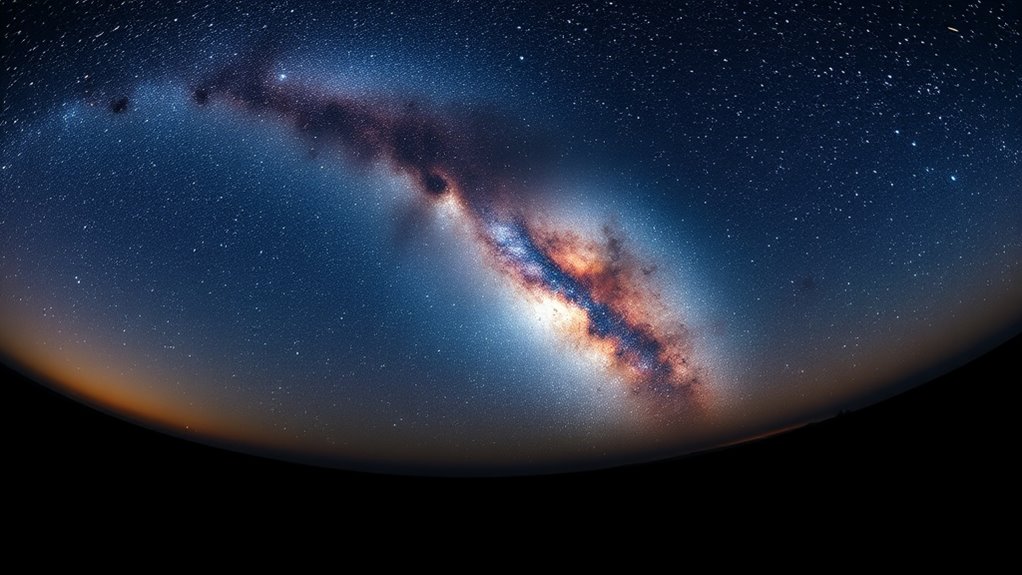
When selecting a wide-field lens for Milky Way photography, I consider factors like the field of view, aperture size, and low-light performance to capture the night sky effectively. I also pay attention to the lens size and weight for ease of handling during long exposures, as well as compatibility with my camera mount. Understanding these points helps me choose a lens that delivers sharp, bright images with minimal hassle.
Field of View
A wide field of view is essential in Milky Way photography because it allows me to capture more of the night sky and landscape in a single shot. Lenses with a focal length between 14mm and 24mm on full-frame cameras are ideal, providing the expansive coverage needed to include both the Milky Way and foreground elements. Circular fisheye lenses, like a 6mm F2.8 fisheye, offer an ultra-wide 220° view, creating a spherical scene that encompasses everything. The field of view directly influences composition, helping me include foreground features alongside the Milky Way. A larger view also reduces the number of shots needed to capture the entire arch, making stitching easier or unnecessary. Ultimately, the right field of view helps create stunning, immersive night sky images.
Aperture Size
Choosing the right aperture size is vital because it directly impacts how much light the lens can gather, which is especially important in low-light conditions like astrophotography. A larger aperture (smaller f-number) allows more light to reach the sensor, making it easier to capture faint objects like the Milky Way. I recommend at least f/2.8 for astrophotography to guarantee enough brightness and detail. Wide apertures also reduce exposure times, helping prevent star trails caused by Earth’s rotation. Plus, they enhance overall image brightness and contrast, resulting in clearer, more vibrant shots. However, lenses with larger apertures tend to be more expensive and bulkier, so it’s important to balance aperture size with other factors to suit your needs and budget.
Low-Light Performance
Since low-light performance directly influences the quality of Milky Way images, selecting a wide-field lens with a large aperture is essential. A lens with an aperture like f/1.2 or f/2.8 allows more light to reach the sensor, enabling brighter, more detailed night sky shots. Fast lenses with wide apertures also reduce exposure times, minimizing star trails and capturing sharper images. It’s important that the lens maintains high image quality at its maximum aperture, avoiding aberrations that can blur details. The optical design matters too; high-refractive index elements improve light transmission and reduce distortion. A lens with excellent low-light capabilities helps you get well-exposed Milky Way photos even in challenging conditions, like light pollution or less-than-ideal atmospheric situations.
Lens Size & Weight
Lightweight and compact lenses are ideal for Milky Way photography because they reduce fatigue during long shoots and make outdoor setups more manageable. A lens weighing under a pound minimizes camera fatigue, allowing me to shoot comfortably for extended periods. Smaller dimensions make carrying and handling the camera easier, especially in remote or rugged locations. Heavier lenses tend to cause camera shake and demand sturdier tripods, complicating outdoor setups. Travel-friendly, slim-profile lenses are perfect for backpacking and astrophotography trips, helping me stay mobile and agile. Reducing lens size and weight also improves overall camera maneuverability, which is vital for framing wide-field astrophotos precisely. Choosing a lighter, more compact lens makes the entire night photography experience more enjoyable and less cumbersome.
Compatibility & Mount
Making certain your lens is compatible with your camera‘s mount is crucial for seamless astrophotography. You need to match the lens mount type, whether it’s Nikon Z, Sony E-mount, or others, for proper fit and function. Confirm the lens is designed for full-frame sensors, as this maximizes the wide-field coverage essential for capturing the Milky Way. Check whether the lens uses manual focus or autofocus; manual focus often gives more control in low-light conditions. Also, verify if the lens can be used directly with your camera or if you need an adapter, and ensure those adapters are available and reliable. Ultimately, consider the aperture size—an F2.8 or larger is preferable to gather enough light and reveal faint celestial details effectively.
Frequently Asked Questions
How Do Wide-Field Lenses Affect Star Trailing in Long Exposures?
Wide-field lenses can cause star trailing in long exposures if they have a longer focal length, making stars appear as streaks instead of points. To minimize this, I prefer using fast, wide-angle lenses with a focal length of 14-24mm and apertures around f/2.8 or wider. Staying within the 20-second exposure limit helps keep stars sharp, giving your Milky Way shots that are crisp and beautifully detailed.
What Is the Best Aperture Setting for Capturing the Milky Way?
Think of your camera as a telescope peering into the cosmos. For capturing the Milky Way, I recommend setting the aperture to its widest, usually f/2.8 or lower. This lets in the maximum light, making the stars pop against the night sky. The wider the aperture, the better your chances of capturing stunning, detailed images without too much noise or star trailing.
How Does Lens Distortion Impact Astrophotography Results?
Lens distortion can considerably impact my astrophotography results by warping star shapes and distorting the overall scene. It often causes stars to look elongated or bent, especially near the edges of the frame, which diminishes the image quality. To minimize this, I choose lenses with minimal distortion and use software corrections during editing. This ensures my photos of the Milky Way remain sharp, accurate, and visually stunning.
Are Manual Focus Lenses Preferable for Night Sky Photography?
Did you know that over 75% of astrophotographers prefer manual focus lenses? I find manual focus essential for night sky photography because it offers precise control when autofocus struggles in low light. Unlike autofocus, manual focus lets me fine-tune, ensuring stars stay pinpoint sharp. So yes, I prefer manual lenses—they give me the confidence and accuracy needed to capture stunning, crisp images of the Milky Way.
How Do Weather Conditions Influence Lens Choice for Milky Way Shots?
Weather conditions greatly influence my lens choices for Milky Way shots. On humid nights, I prefer lenses with good sealing to prevent moisture from entering, while chilly weather calls for lenses that perform well in low temperatures. If there’s a chance of rain, I opt for weather-sealed lenses or keep my gear protected. Clear, calm nights let me focus on fast, wide apertures for sharper, more vibrant images.
Conclusion
Choosing the right wide-field lens can truly transform your Milky Way shots. I remember a night when switching to my favorite lens revealed a breathtaking sky I’d never captured before—like a secret universe opening up just for me. It’s amazing how the right gear can turn a simple night into an unforgettable experience. So, trust your instincts, pick what feels right, and let the stars surprise you. After all, some moments are meant to be captured.
